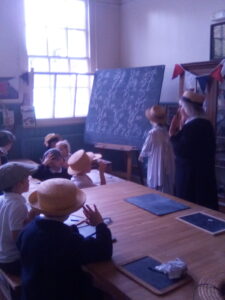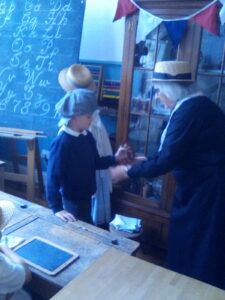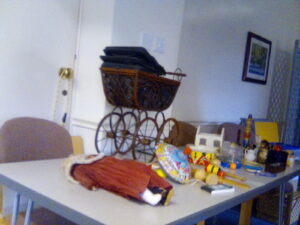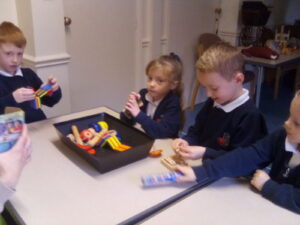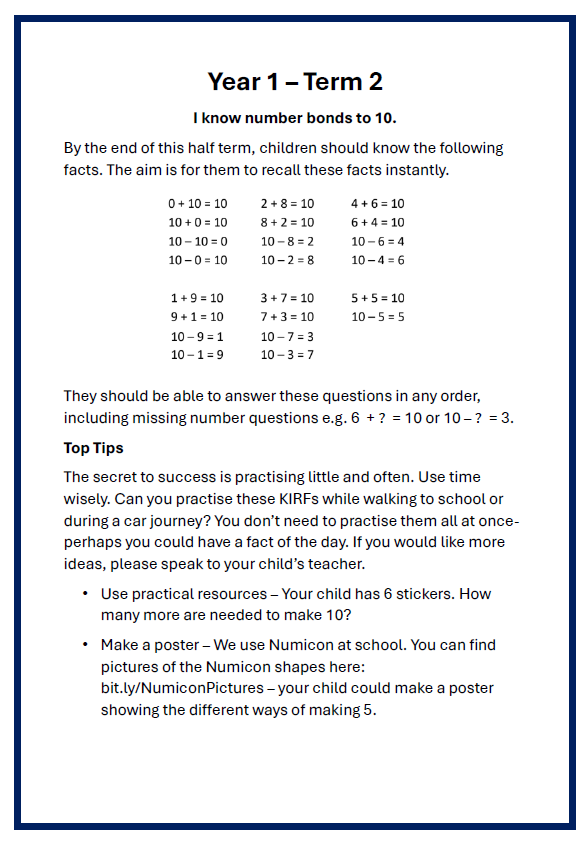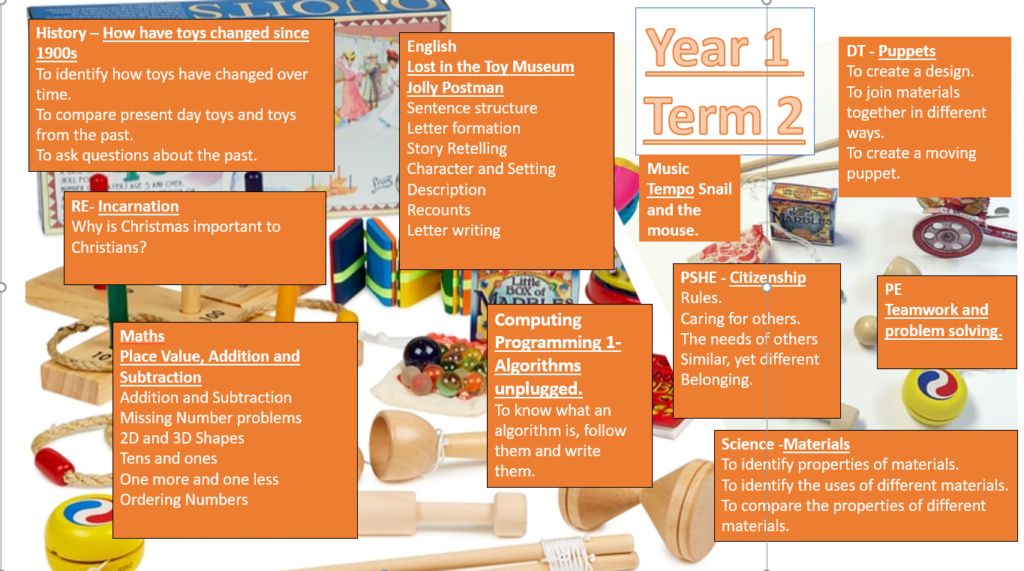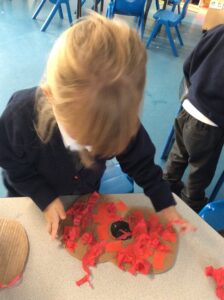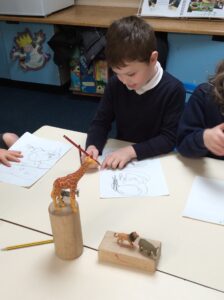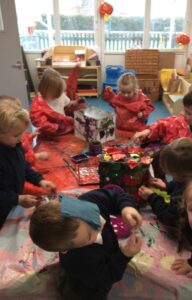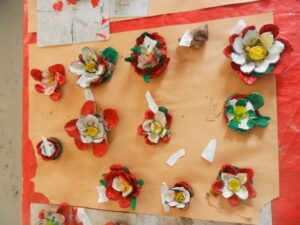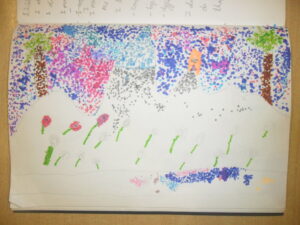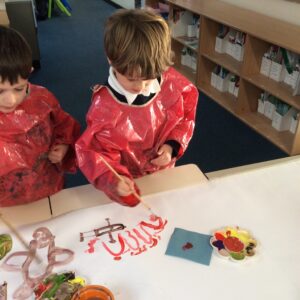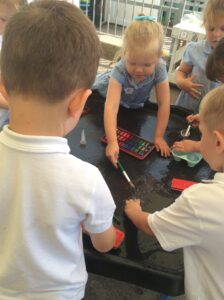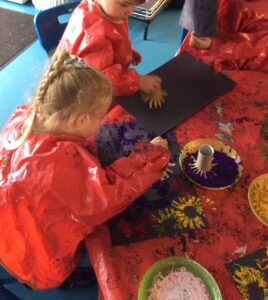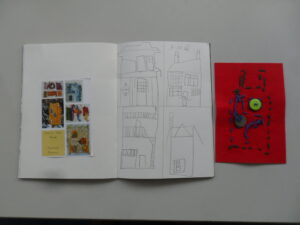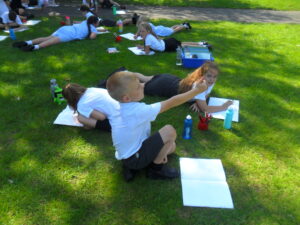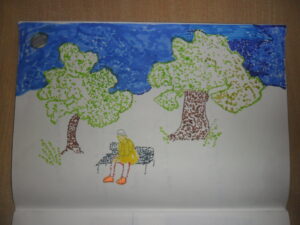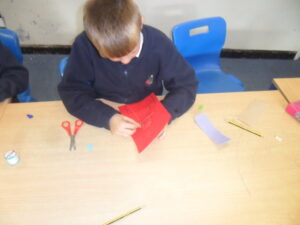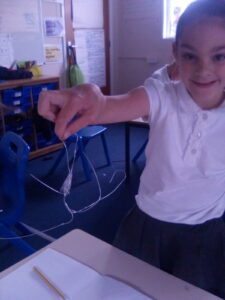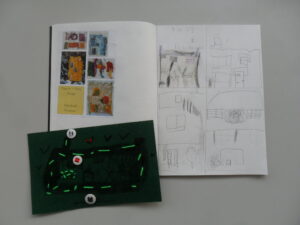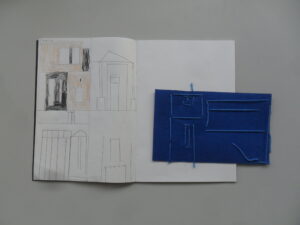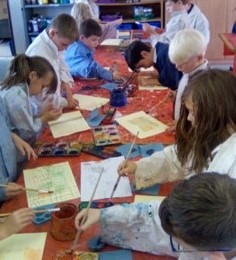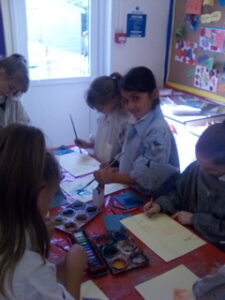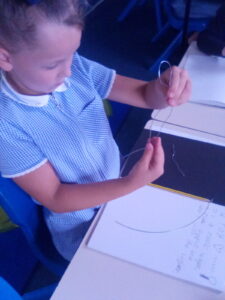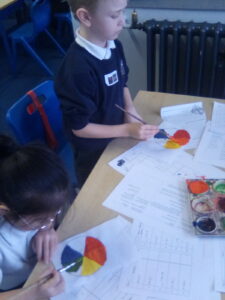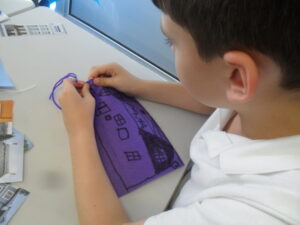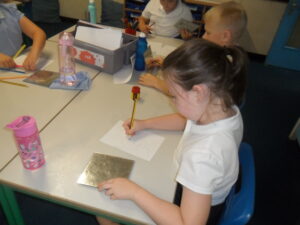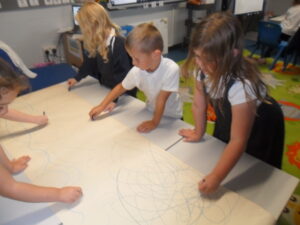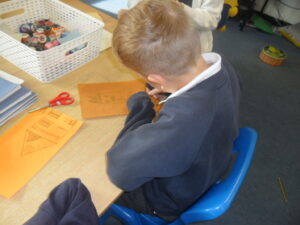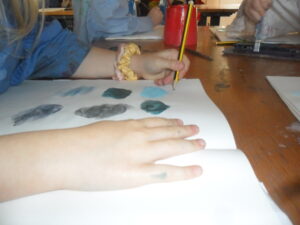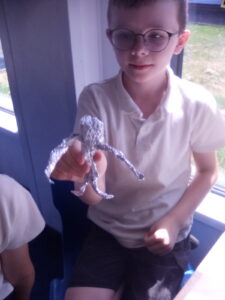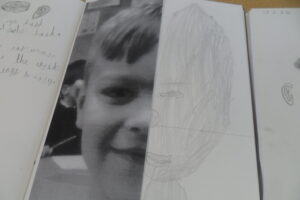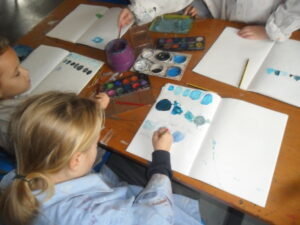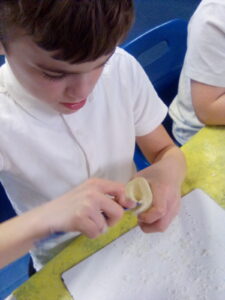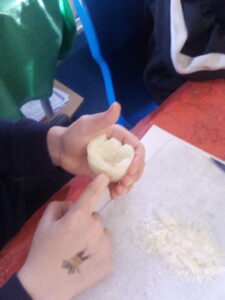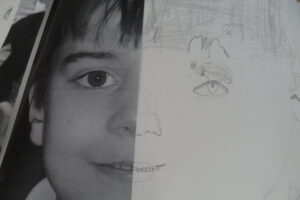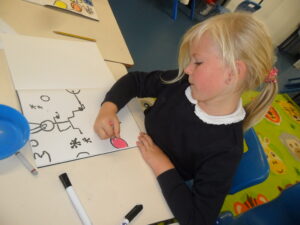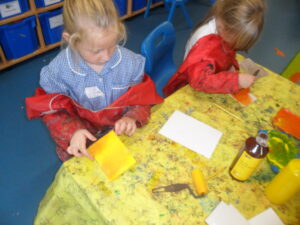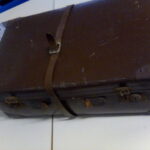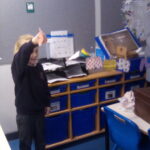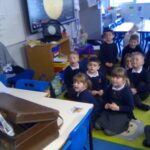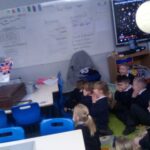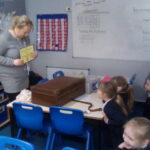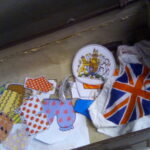‘ Art lessons help me to be creative which means I can let my imagination go wild.’ Year 6
Our school curriculum is driven and shaped by our school vision, which informs everything that we do.
St Nicholas provides a welcoming, inclusive and aspirational learning environment at the heart of its community. We nurture, encourage and support all children, adults and their families to be the best as God intended. Following God’s example of love and trust, we develop resilience and creativity in all we do.
Learning, loving and encouraging through Christ.
‘I find art calm and happy. I just find it fun. Sometimes I can find it hard but I’m learning.’ Year 3
“Art is not just a subject to learn, but an activity that you can practise with your hands, your eyes, your whole personality.”
Quentin Blake, Children’s Laureate
‘ Creativity is in my blood and helps my work be fun.’ Year 1
INTENT
At St Nicholas we work together to ensure to provide an Art Curriculum which allows and encourages the children to explore their imaginations, generate ideas, acquire skills, apply judgements and rejoice in their learning. Through our value of perseverance, we show that making mistakes is how we learn. Within the school we create a safe space for our children to explore, experiment and take risks without the fear of getting it wrong which is the basic essence of what art is and can offer to our children. We recognise that everyone is unique and therefore encourage the children to express, explore and celebrate ideas, feelings, attitudes while using the school values.
As children progress they will become confident in their abilities and develop as critical, creative thinkers by enriching, extending and consolidating their learning in a variety of contexts using a range of different media.
We aim to foster their originality and creativity using art as a means of communication. During this the children will learn to self-reflect, communicate their opinions of others work positively and make informed choices about media and what they want to use to best express their thoughts and ideas.
We take inspiration from our class artists, learning more about them and their style, which we then apply to our own work. We plan and teach sequenced art lessons based on skills, using a range of media and give the children opportunities to apply the skills learned in other areas of the curriculum, making the lessons relevant and meaningful.
Alongside this by the end of their time at St Nicholas, they should have an idea on how art and design both reflect and shape our history, and contribute to the culture, creativity and wealth of our nation.
‘Creativity in art is about mindfulness and fun. It allows you to be yourself and not be boring.’ Year 6
We are Architects- Arts week 2023
‘Art lessons make me feel happy because I am very good at art and it is my favourite lesson.’ Year 5
IMPLEMENTATION
Curriculum structure
At St Nicholas we teach Art, Craft and Design through a skill-based curriculum and where possible learning is linked to other subjects. The skills are developed and built upon each year so that progression can be seen clearly across the school. All children are exposed to a range of media each year, giving them the opportunity to explore, develop and embed their skills and understanding of that media.
Art and Design will be taught once every other half term and where appropriate may be blocked dependant on the needs of the project being worked on.
Within the learning journey of art, each lesson will be linked to an area of the year groups curriculum and an element of will be a focus for learning for the learning. This will then lead to analysing and evaluating an artist or comparing a number of artists who may use this particular skill/element. The children will then be given the chance to be taught a skill/technique and allowed time to explore and practise within their sketchbooks. Within this a variety of media will be given to experiment with. Children will deepen their understanding of each element as they progress through the school. They will be taught the meaning of key ideas and associated vocabulary. They will also be taught vocabulary appropriately to express their thoughts and feelings on both their own and others work to help develop, review and improve output.
Creative Club
‘Creativity is to make what you want and makes me feel free.’ Year 4
IMPACT
At the end of each year the children will have been exposed to a wide variety of different media, giving them the opportunity to use it in a different way or for a different purpose and develop a range of skills. This will build upon their prior knowledge of what they can do when using this media. Our lessons are accessible for all of our pupils and they are proud of what they have achieved. They will be able to look back at their earliest work in their sketch books and see the progress they have made. As we move up through the school the children will begin to develop their own preferences of media and styles as they will have been exposed to them frequently throughout their time in school.
The Art and Design curriculum will contribute to the children’s personal development in creativity, independence, judgement and self-reflection. This would be seen in them being able to talk confidently about their work, and sharing their work with others.
Progress in Art and Design is demonstrated through regularly reviewing and evaluation of their work. Teachers will continuously monitor pupils work over time as they gain skills and knowledge. They will also question the process and thinking behind their ideas. Outcomes will be key but the use of sketchbooks showing the journey leading to them is more important.
Our approach of being open and accepting of mistakes will not only help to develop our children’s creativity within Art but will extend to other areas of their lives. There are many key life skills that will be developed through our attitude and teaching of Art which will support our children as they move on after St Nicholas, such as respecting others and their work even if we don’t like it personally, or carrying on after something goes wrong or when things do not turn out how we planned. This resilience is a key skill which our children will need throughout their lives.
‘I have learnt sketching, shading, tracing and drawing features.’ Year 2
Art and Design LTP
ST Nicholas Art Progression of skills 2024
‘I use a sketchbook to practise my skills and do my favourite designs.’ Year 6
‘Art lessons make me feel good, calm, arty and excited.’ Year 2
